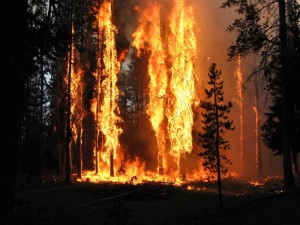 You can probably cut your caloric intake by 5 percent and be just fine. (Maybe better.) Some other things you can easily cut by 5 percent: Time watching TV. Old t-shirts. Beer. Caffeine. Old books.
You can probably cut your caloric intake by 5 percent and be just fine. (Maybe better.) Some other things you can easily cut by 5 percent: Time watching TV. Old t-shirts. Beer. Caffeine. Old books.
Cut some other things by 5 percent and you’ll feel the bite, but you’ll survive: Time with loved ones. Time reading. Time outdoors. Your winter fuel consumption. Vacation budget.
But cut some other things by just a tiny 5 percent—like, say, your body temperature or medicine—and you will face serious consequences. This is one reason why the sequestration is so moronic.
The National Park Service, like other government agencies, needs to cut 5 percent from its budget. So the NPS prioritizes. And distributes the responsibilities.
The residents of Cody and Jackson, Wyoming, hold a bake sale to get the road to Yellowstone plowed so the park could open. Mount Rainier will reduce staff, close one visitor’s center, shorten the season at several campgrounds. Other parks make other choices. Fewer jobs, less money generated in surrounding communities, no one is happy, but we muddle along.
But some functions—let’s say, fire-fighting—that don’t lend themselves to prioritization. Because when you pick park A over national forest B, the pain isn’t just a gnat’s-bite of inconvenience or even a nasty welt of disappointment. It’s devastation. It’s obliteration. It’s billions lost and a century of regrowing.
It’s not a hole that you can fill with a bake sale.
Huffington Post points out that “Congress cut the current budgets for the Forest Service and Agriculture Department 5 percent under the mandated spending reductions, then added another 2.5 percent cut for fiscal 2013.”
Because of the cuts, the U.S. Forest Service will hire 500 fewer firefighters this season. Similar reductions will be implemented at other agencies, including the Bureau of Land Management, National Park Service and Fish and Wildlife Service. And less money will go into preventive actions, like prescribed burns. Interior Secretary Sally Jewell and Agriculture Secretary Tom Vilsack have “emphasized that states and local communities will be called upon even more to help battle blazes, protect property and be patient if federal crews are occupied elsewhere.”
So yes, they say, we’re aware that the land we’ve acquired is on fire, partly because we can’t afford to manage it to minimize the risk. And the embers are falling on your house. Just do what you can, take a number and be patient. The next available fire-fighter will serve you unless something even bigger pops up. Because we’re saving 5 percent.
Photo: Crater Lake National Park, by Mike Lewelling, winner of 2010 National Park Service Fire and Aviation Photo Contest, Wildland and Prescribed Fire category.









